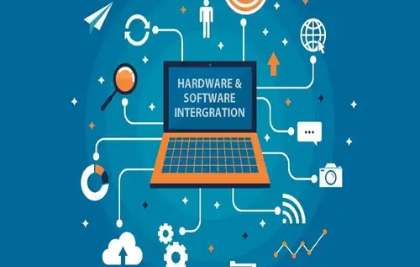The Evolution of Hardware Integration
Hardware integration has evolved from simple device interconnectivity to complex smart ecosystems.
In 2025, devices no longer operate in isolation — they communicate, analyze, and adapt using real-time data. From wearable health trackers to smart factory sensors, hardware integrations are enabling automated decision-making and predictive maintenance.
This convergence of hardware and software not only improves efficiency but also enhances user experience through data-driven intelligence.
Technologies Driving Modern Hardware Integrations
Modern hardware integration relies on a combination of IoT, AI, and cloud computing.
IoT sensors collect environmental data, while AI algorithms interpret this data to make intelligent adjustments. For example, a smart thermostat analyzes patterns and adjusts room temperature automatically.
Meanwhile, cloud integration ensures that devices stay synchronized, backed up, and securely connected across networks. The rise of edge computing further boosts performance by minimizing data transmission delays.

-
Internet of Things (IoT):
IoT connects multiple devices and sensors, allowing real-time data collection, automation, and remote monitoring across industries like healthcare, manufacturing, and transportation.
-
Embedded Systems and Microcontrollers:
Microcontrollers such as Arduino, Raspberry Pi, and ESP32 are at the core of hardware integration, enabling precise control and communication between software and physical components.
-
Embedded Systems and Microcontrollers:
Microcontrollers such as Arduino, Raspberry Pi, and ESP32 are at the core of hardware integration, enabling precise control and communication between software and physical components.
-
Cloud and API Connectivity:
Cloud platforms and APIs enable seamless integration between hardware and software, supporting real-time updates, analytics, and secure data exchange.
Hardware integrations are shaping a connected world where devices communicate intelligently and operate seamlessly.
As technology advances, the collaboration between hardware, AI, and software ecosystems will continue to redefine industries — from smart homes and healthcare to industrial automation and transportation.
In essence, the future of innovation depends not only on smarter software but also on intelligent, well-integrated hardware systems that bring those ideas to life.







“Hardware integration is the bridge that connects human innovation with machine intelligence — powering the future of automation.”